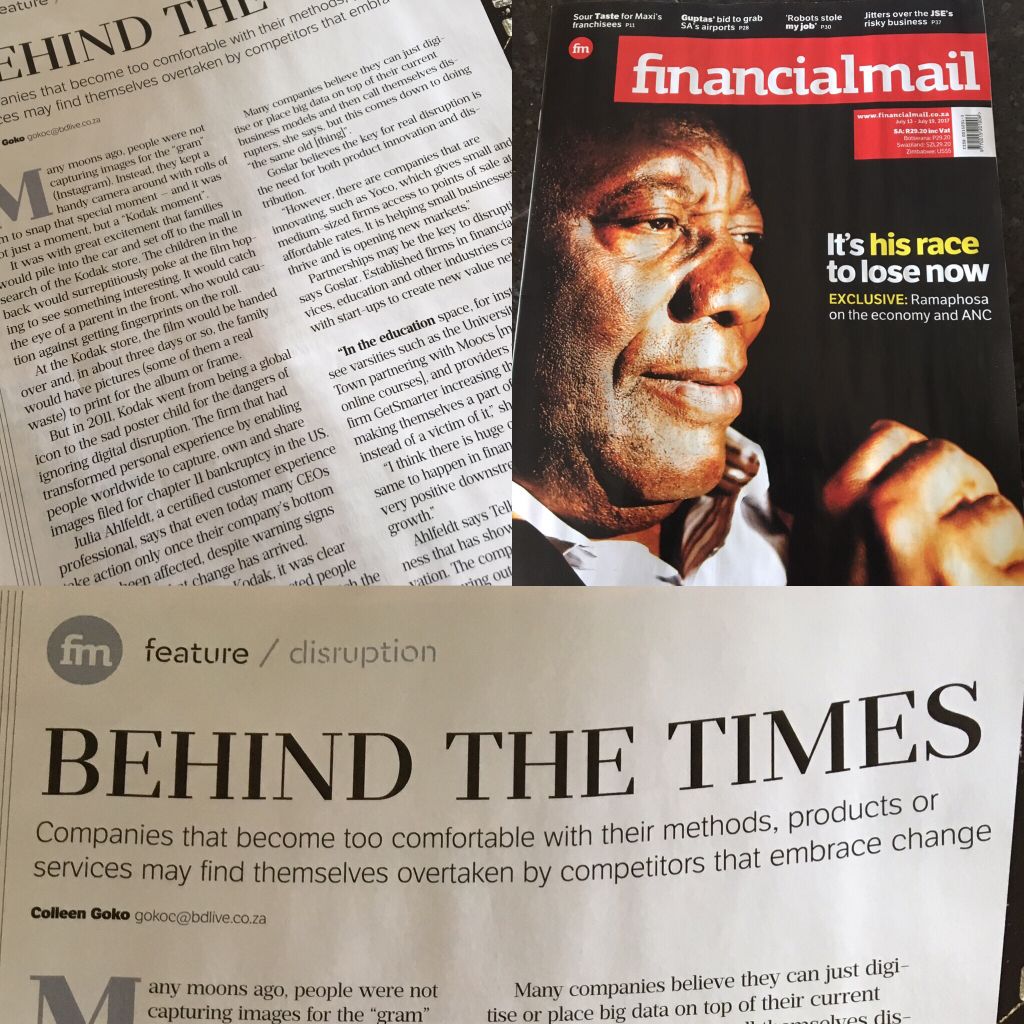By Julia Ahlfeldt
Why South Africa’s top execs must take heed of the warning signs in a highly disruptive market
Retail, finance, real estate and the media are among the industries that are most likely to be severely disrupted over the next five years. Challengers won’t only come from within these sectors, but also from previous non-competitors, as companies like Google look to expand their offering.
Given this unchartered and tumultuous market place, CEOs of traditional incumbents need to take heed of changing consumer behaviour or risk becoming another Kodak, a classic case which left one iconic market leader with egg on its face after failing to adapt to digital.
Voting with their feet
Shopping malls are a prime example of where digital is disrupting long-established consumer patterns. Anchor tenants are continually reported to be shutting shop, including big names like Stuttafords and Edgars. They’re not just competing against international brands, as the likes of Mango, Nine West and River Island are also closing in response to a changing trading environment.
While online shopping only accounts for 1% of the total local retail pie, it is rapidly growing. Offers of 30% off everything at etailers like Spree and Superbalist are tempting for consumers, especially now that we are officially in a recession. This is a trend that bricks and mortar retailers need to watch.
In the hospitality sector, traditional hotels and guest houses are being hit by the “Uberisation” of their industry as more and more people book accommodation via AirBnB. An estimated 400 000 guests were hosted in South Africa by the tech platform last year, injecting R2-billion into the economy. In response to this severe disruption to the local tourism sector, the Federation Hospitality Association of South Africa (FEDHASA) is calling for AirBnB to comply with industry regulations, but regulations can’t fight the wave of innovation indefinitely. Ultimately, established businesses must embrace change or face going out of business.
Take heed of the headwinds
Despite the many warning signs across sectors that change is here, too many CEOs only take action once their bottom-line is affected. In today’s rapidly evolving world, that’s simply too late. As Alex Rampell from Andreessen Horowitz so eloquently said, “The battle between every startup and incumbent comes down to whether the startup gets distribution before the incumbent gets innovative.”
So what should a CEO do? For starters he or she needs to invest in CX to avoid losing customers to competitors. This in turn boosts profitability as there is a direct correlation between investment in CX and financial performance. The relationship between CX and improved profitability has been supported by many reports including a 2015 Economist Intelligence Unit and Genesys study. It revealed that 59% of the surveyed executives said they experienced better revenue growth when prioritising their CX investments.
Shareholders and boards of directors must demand leadership accountability and follow in the footsteps of companies such as United Airlines that have required CEOs to assume responsibility for their CX fall outs. Last month shocked customers turned to social media to share footage of a doctor being involuntarily pulled off a United flight from Chicago due to the airline’s overbooking. Amplified by the public and celebrities who shared the content, United’s stock fell 4,4% on the day, regaining strength to settle around 1,1%. United’s CEO, Oscar Munoz will ultimately take the heat for the airline’s most recent faux pas and personally feel the pinch, as $500k of his annual bonus is tied to customer satisfaction surveys – of which the airline collects around 8,000 every day.
Time to take action
While CX is relatively new in South Africa – it’s been around since 2011 – it’s only been adopted by a handful of listed companies. Those that are slow to adapt risk losing market share, customers and relevance. In an era where the next Uber can come from anywhere, industry incumbents need to stay on their game and watch out for the warning signs before becoming a Kodak.
Insights from this article were used as part of a feature story “Behind the Times” in the Financial Mail on 13 July 2017, which can be viewed on Businesslive.
